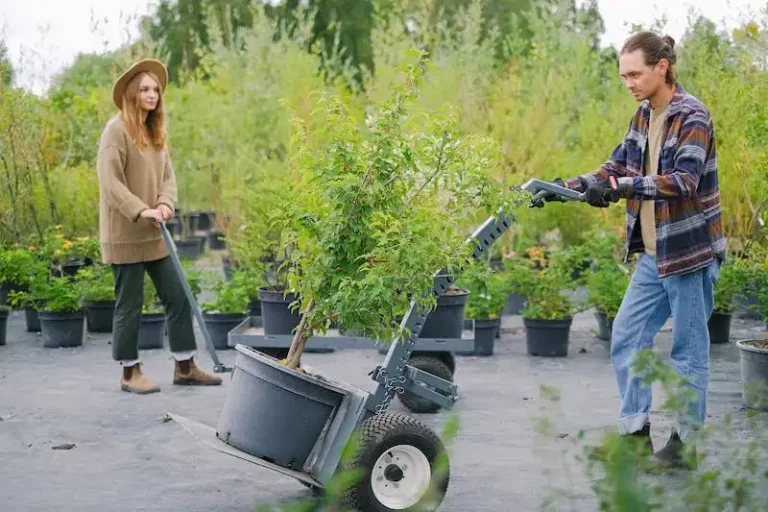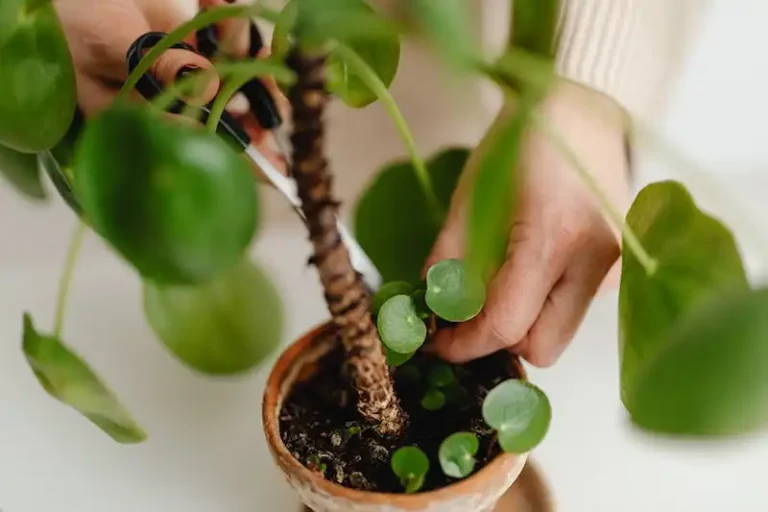Freesia is a beautiful blooming flower that is loved by many gardeners. It is a member of the Iridaceae family and is known for its vibrant colors and delightful fragrance. Freesias are easy to grow both indoors and outdoors, making them a popular choice for floral enthusiasts in any area.
When growing freesias indoors, it is important to provide them with the right conditions. They should be placed in a bright area of the house, but not directly in the sun. Overwatering should be avoided, as it can cause the bulbs to rot. Freesias should be watered sparingly until the leaves begin to yellow, indicating the start of their dormant season.
Many people choose to grow freesias as houseplants only, and with recent articles about caring for them, it is clear that they can be a success. Freesias can be grown from bulbs, which should be planted in well-draining soil mixed with humus. The bulbs should be planted with the pointed end facing upwards and covered with soil. It is important to water the newly planted bulbs carefully, as too much water can cause the bulbs to rot.
Freesias will begin blooming in the spring, with the flowers lasting through the summer season. The blooms come in a variety of colors, including pinks, reds, whites, and yellows. After the blooming season, the leaves will start to fade, and the plant will enter its dormancy period. During this time, it is important to stop watering the freesias and allow the leaves to die back naturally.
If you want to store freesia bulbs for the winter, it is recommended to dig them up carefully and let them dry in a cool, dark place. Once dried, the bulbs can be stored in a paper bag or mesh bag, with each bulb placed in a layer of peat moss or wood shavings. Be sure to label each bag with the variety and color of the freesia bulbs for easier planting next season.
In conclusion, freesias are beautiful flowers that can be grown both indoors and outdoors. They require proper care and attention, but with the right conditions and care, they can thrive and provide a stunning display of blooms. Whether you choose to grow freesias as houseplants or in your garden, they are sure to bring joy and beauty to your surroundings.
Freesia Bulbs
When it comes to early blooming bulbs, Freesia adansonii is a popular choice among gardeners. These beautiful flowers prefer cooler temperatures and can be planted in April. It is best to plant a couple of bulbs together in order to create a natural-looking flowering plant.
Freesia adansonii is known for its hardiness as both a houseplant and an outdoor plant. It has long, spider-like blooms that can add a touch of elegance to any garden. If you are growing Freesia bulbs indoors, make sure to allow the soil to thoroughly dry out between waterings. This plant won’t tolerate overwatering, so be sure to provide it with well-draining soil.
For outdoor gardeners, Freesia adansonii prefers a hardiness zone of 9-10. It can be prone to a few pests, but overall, it is a relatively low-maintenance plant. Freesia bulbs will flower better if they are stored in a cool, dry place before planting. It is important to note that Freesia adansonii bulbs have a natural dormancy period, so they may not flower right away after planting.
When it comes to planting Freesia bulbs, there are a few key instructions to follow. First, start by lightly scraping off any debris or excess soil from the bulbs. Then, plant the bulbs about 2-3 inches deep and 3-4 inches apart. Freesia adansonii bulbs prefer a sunny location with well-draining soil. They also require regular watering, especially during the spring and summer months.
If you are planning to grow Freesia bulbs indoors, they can be potted in a well-draining soil mix. Freesia adansonii is an ideal houseplant as it grows well in pots. It is important to note that Freesia adansonii prefers cooler temperatures, so keep them away from hot, dry places like radiators or sunny windowsills.
When it comes to caring for Freesia bulbs, regular maintenance is important. Be sure to remove any wilted or damaged foliage to promote healthy growth. Freesia adansonii bulbs do not require any special plant food, but a light application of organic or superphosphate fertilizer can help boost growth and blooming.
Whether you plan to grow Freesia adansonii bulbs indoors or outdoors, they will reward you with beautiful, upright blooms. These flowers are perfect for bouquets and can add a touch of color and fragrance to any space. With proper care and maintenance, your Freesia bulbs will continue to bloom year after year!
For more tips and articles on growing Freesia adansonii bulbs, visit guide-to-houseplants.com.
When to Plant Freesia Bulbs
Freesia bulbs are gorgeous flowering plants that are easy to grow and require minimal maintenance. If you want to enjoy their vibrant colors and beautiful fragrance in your garden or as an indoor houseplant, it’s important to know when to plant freesia bulbs.
Freesia bulbs should be planted in the cooler months, either in the early spring or fall, depending on your climate. The ideal time to plant freesia bulbs is in April, as this allows them enough time to establish their roots before the hot summer season.
Before planting freesia bulbs outdoors, you should first soak them in water for a few hours. This helps to hydrate the bulbs and kick-start the sprouting process. Then, choose a well-draining soil that is rich in organic matter. Freesias prefer slightly acidic soil with a pH between 6.0 and 6.5.
When planting freesia bulbs, make sure to place them upright with the pointed end facing upwards. Space them about 4-6 inches apart and plant them at a depth of 2-3 inches. After planting, water the bulbs thoroughly and then leave them to grow.
If you prefer to grow freesias as an indoor houseplant, you can start by storing the bulbs in a cool, dark place for a few weeks. This mimics the natural cold treatment that freesia bulbs would go through outdoors. After storing, place the bulbs in a pot with well-draining soil and water them thoroughly. Place the pot in a bright spot indoors, but away from direct sunlight.
Freesia bulbs are relatively pest-free, but they can occasionally be attacked by common houseplant pests such as aphids or spider mites. To prevent these pests, make sure to keep the foliage clean and free from debris. If you do notice any pests, you can use natural solutions or pesticides to get rid of them.
In conclusion, knowing when to plant freesia bulbs is crucial for successful growth. Whether you choose to grow them outdoors in the garden or indoors as a houseplant, following these planting and care guidelines will ensure that your freesias thrive and provide you with beautiful blooms throughout the season.
Where to Plant Freesia Bulbs
Freesias are beautiful and fragrant flowering plants that are popular among gardeners. If you have recently purchased freesia bulbs and are wondering where to plant them, this guide will provide you with all the planting instructions you need.
Firstly, freesias are bulbs that prefer to be planted in a well-drained potting soil. Make sure the potting soil is loose and not compacted. A mixture of sand and peat moss works well for freesias.
Next, choose a location that receives full sun or partial shade. Freesias require a minimum of 6 hours of sunlight daily to grow and bloom successfully. They prefer cooler weather and don’t do well in hot and humid climates.
During the planting season, which is typically in April, it is important to keep in mind the hardiness zone you are in. Freesias are hardy in zones 9-10. If you are in a colder zone, you can still grow freesias as annuals by planting them in pots and bringing them indoors before the first frost.
When planting freesia bulbs, make sure to space them about 4-6 inches apart and plant them about 2-3 inches deep. This will allow them enough space to grow taller and produce beautiful blooms.
Freesias come in a variety of colors, including white, yellow, pink, purple, and even blue. Choose the colors that best suit your garden or create an attractive color combination by planting different colored bulbs together.
Once you have planted the freesia bulbs, make sure to water them lightly. Freesias prefer moist but not soggy soil. They also don’t like to be overwatered, so it’s better to underwater them than to overwater them.
If you are growing freesias in a garden, it’s important to provide support to the taller varieties. The stems can be delicate and may bend or break under the weight of the flowers. Use stakes or a trellis to keep the freesias upright and prevent them from falling over.
After the freesias have finished blooming, you can leave the foliage to die back naturally. This allows the bulbs to store energy for the next growing season. Once the foliage has wilted, you can cut it back to the ground.
If you live in an area with harsh winters, you may need to dig up the freesia bulbs and store them indoors for the winter. Carefully dig up the bulbs after the foliage has died back and gently brush off any excess soil. Place the bulbs in a cool, dark, and dry place for the winter. Make sure to label the bulbs, so you remember what color and variety they are.
In summary, freesias are beautiful and fragrant flowers that can be grown both outdoors and indoors. They prefer well-drained potting soil, full sun or partial shade, and cooler weather. Proper care during planting, growing, and blooming will ensure the success of your freesias.
How to Plant Freesia Bulbs
Planting freesia bulbs is a popular activity for many people who want to add color and fragrance to their garden. Freesias are long-lasting flowers that come in a variety of colors, including white, yellow, lavender, and more. They are easy to grow and require minimal maintenance, making them a favorite choice for both beginner and experienced gardeners.
When planning where to plant your freesia bulbs, it’s important to consider the hardiness of the plant and the region you live in. Freesias are native to South Africa and are typically grown as perennials in warmer regions. In colder regions, they are often grown as annuals. Freesias prefer full sun or partial shade and well-drained soil.
Here are step-by-step instructions on how to plant freesia bulbs:
1. Choose a planting location: Select a spot in your garden that receives at least 6-8 hours of sunlight per day. Freesias can also be grown in containers if you prefer an indoor or patio garden.
2. Prepare the soil: Freesias thrive in well-drained soil. If your soil is heavy or clayey, mix in some organic matter like compost or peat moss to improve drainage. Avoid planting freesias where water tends to accumulate, as it can cause the bulbs to rot.
3. Plant the bulbs: Dig a hole that is about 4-6 inches deep. Place the freesia bulbs, pointed end up, in the hole and cover them with soil. Space the bulbs about 4-6 inches apart, as they will grow taller and need room to spread.
4. Water thoroughly: After planting, water the bulbs thoroughly to settle the soil and promote root growth. Freesias need regular watering, especially during dry spells. However, be careful not to overwater, as this can lead to bulb rot.
5. Fertilizing: Freesias benefit from regular fertilizing. Use a balanced fertilizer with a higher phosphorus content, such as a 5-10-5 or 10-20-10 formula, to promote flowering. Apply the fertilizer lightly every 4-6 weeks during the growing season.
6. Cover if needed: If you live in a region with late-spring frosts or temperatures below freezing, consider covering your freesia bulbs with a layer of mulch or straw to protect them from the cold. Remove the cover once the threat of frost has passed.
7. After flowering: Once the freesias have finished flowering, you can cut the flower stalks back to the base to encourage the plant’s energy to go back into the bulb. Allow the foliage to die back naturally, as the nutrients will be stored in the bulb for next year’s growth.
8. Keeping freesias indoors: Freesias can also be grown indoors as potted plants. Plant the bulbs in a well-draining potting mix and place them in a sunny window or under grow lights. Water the bulbs lightly, allowing the soil to dry out slightly between waterings.
By following these instructions, you can enjoy the beautiful blooms and delightful fragrance of freesias in your garden or indoor space. Whether you’re a seasoned gardener or just starting out, freesias are a great addition to any floral collection.




